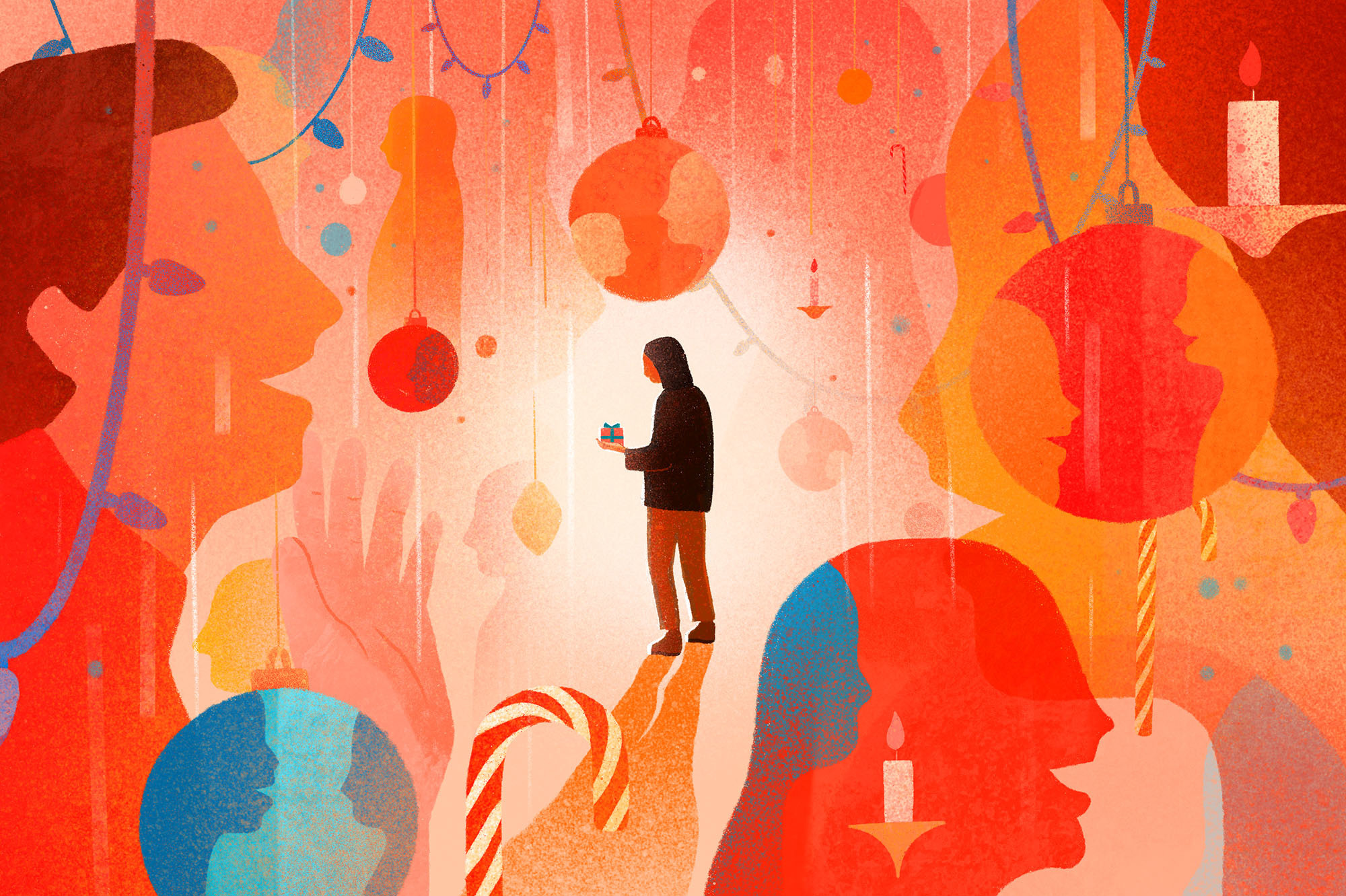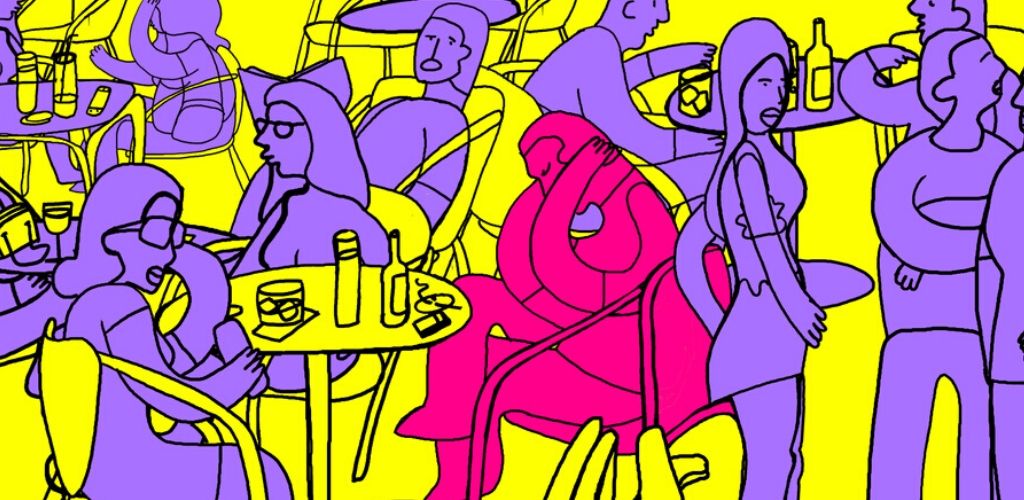什么是社交恐惧症?
All About Social Anxiety

I Feel Shy
Shyness is a common reaction when being exposed to unfamiliar situations or new people. When you are shy, you may have feelings of apprehension or awkwardness when you are around others, and will often find it uncomfortable when you need to talk to people. This can lessen, though, as you become more familiar with your surroundings and peers.
When shyness becomes debilitating, and impacts heavily on your life and life choices, you may be suffering from a form of anxiety known as social anxiety, or social anxiety. If you find it very difficult to be involved in social situations, or situations where you will be around other people, reading this information on social phobia may help.
What is Social Anxiety?
Social anxiety is an excessive fear of being negatively evaluated by other people. People with social anxiety worry that they will embarrass or humiliate themselves, and they worry about being judged for showing the physical signs of anxiety, like blushing, shaking, or sweating.
As a result, people with social anxiety avoid social situations or situations where they might be judged by other people, such as job interviews, parties, group conversations, public speaking, or even being in a crowded room. Generalised and severe social anxiety can lead to almost complete isolation!
Situations that are commonly feared by people with social phobia include:
Talking to other people
Talking in front of other people
Going to parties
Eating, drinking, or writing in front of other people
Saying ‘no’ to someone
Sending text messages
Reading aloud

What are the Signs of Social Anxiety?
Entering these situations usually triggers an immediate anxiety response, called the ‘fight-or-flight response’. This involves blushing, shaking, sweating, heart palpitations, sweating, nausea, and sometimes an upset stomach. People with social anxiety often feel embarrassed by these symptoms, which makes their anxiety and avoidance worse!
Physical Symptoms
There are a number of typical physical symptoms experienced by people with social anxiety. These include:
Blushing
Shaking or trembling
Increased heart rate
Sweating
Mind going blank
Difficulty concentrating
Urge to use the toilet
Dizziness
Vomiting
Nausea
Urge to escape or leave
Behavioural Symptoms:
As a result of their fears, a person with social anxiety may do a number of things to try to prevent the negative evaluation from happening. These may include:
Avoiding the situation altogether
Avoiding similar sorts of situations
Leaving prematurely
Focusing on yourself
Trying not to draw attention to yourself
Keeping quiet
Not looking at other people
Complications
Social anxiety often goes unrecognised. We all feel uncomfortable in social situations sometimes, so clinicians might confuse social anxiety with normal shyness or depression. Also, understandably, people with social anxiety can find it really difficult to talk about their worries, for fear of being judged! However, social anxiety is one of the most common mental health problems – 13% of Australians will be diagnosed with Social Anxiety Disorder in their lifetime. Men develop this disorder as frequently as women, and social anxiety tends to be a chronic disorder that may fluctuate in levels of severity and impairment over time.
1.Depression
A large number of people with social anxiety also suffer depression, a disorder characterised by persistent low mood, loss of pleasure, hopelessness about the future, feelings of worthlessness, and a number of physical symptoms, including sleep and appetite disturbance.
Sometimes people also experience thoughts of suicide. If you have been having suicidal thoughts, or if you have been experiencing a number of these other symptoms, you may be clinically depressed and you must see a doctor.
2.Alcohol Problems
People with social anxiety often rely on alcohol to cope in social situations. Unfortunately, alcohol use can become a problem in itself.
Alcohol abuse is one of the main additional problems for people with social anxiety. You may need to talk to a health professional about your alcohol use.
3.Benzodiazepine Dependence
Benzodiazepines, such as diazepam, have been prescribed for social anxiety and other anxiety disorders.
They are not the treatment of choice, however, as they are highly addictive, so withdrawal symptoms are experienced when the drug is stopped. In addition, people rapidly develop tolerance to the drug, so that greater doses are required to achieve the same effect.
4.Low Self-Esteem
Coping with severe social anxiety for most of their life will badly affect a person’s self-esteem. They may also become quite socially isolated.
If a person has spent many years avoiding social situations or certain people because of fears about what others think, it will likely to take longer for their anxiety improve with treatment.

What Causes Social Anxiety?
Research suggests that genetic and environmental factors interact to cause social anxiety. However,I in order to treat your social anxiety, rather than focusing on why you have the problem, it can be more useful to look at what is maintaining the problem, and address these factors through CBT.
Cognitive Behaviour Therapy
Cognitive-behaviour therapy (CBT) is the treatment of choice for social anxiety. It involves changing the way you think, feel and behave in social situations. CBT is offered either face to face, or through internet CBT providers, like us.
A course of CBT should include:
Ongoing assessment of a person’s levels of social anxiety.
Education about anxiety, tailored to each individual’s needs. For more information about anxiety, please see the anxiety fact sheet
Training in strategies, such as mindfulness, to manage anxiety symptoms, and encouragement in practicing these techniques regularly.
Cognitive interventions
• CBT helps people with social phobia to identify and challenge their fears. A person should monitor their thoughts, and label their thinking distortions during specific situations throughout the day.Behavioural interventions
• CBT should focus on graded exposure to feared situations. For example, if a person is fearful of eating in front of others and would like to be able to eat a meal in a local cafe, the following hierarchy could be adapted according to how difficult they find each step.
1) Have a soft drink at the cafe early in the morning when there are not many people around.
2) Have a soft drink at lunchtime when the cafe is busy.
3) Have a cup of tea and a sandwich early in the morning.
4) Have a cup of tea and a sandwich at lunchtime.
5) Have a full meal (using cutlery) and stay for twenty minutes even if you do not eat the whole meal.
6) Have a full meal (using cutlery) and stay until you’ve eaten the whole meal.
• the steps can be adapted to include the presence or absence of friends, or to accommodate slightly different goals or problems (e.g., to be able to sign a form, or use a telephone, while people are watching). The last step on the hierarchy represents the situation or activity the individual fears most.
• CBT may also include “social mishap” exposure, with people putting themselves in situations where they embarrass themselves in public. During these exposures, people with social phobia are able to confront very uncomfortable situations, thereby increasing the power of the exposure, and challenge common thoughts (i.e., “What’s the worst that could happen?”).
• People with social phobia should also be encouraged to identify and let go of safety behaviors. These behaviours include avoiding other peoples’ eyes, sitting alone in a corner, mumbling or speaking very softly, and pre-planning all social encounters. People with social phobia often rely on these safety behaviors, and believe that they cannot cope without them.
Some people with social anxiety may need to learn some conversational and interpersonal skills, which are also included in our course.
Referral or specialist consultation will be necessary if social anxiety or avoidance persists despite the above measures.

Coping with Symptoms of Social Anxiety
Slow Breathing
Your breathing rate increases automatically as part of the fight or flight response. Learning to slow down your breathing rate when you are anxious can settle some of the other anxious sensations, as well as help you to focus your mind.
First, time your breaths for one minute (1 breath in and out equals one).
Then sit down comfortably in front of a clock or a watch with a second hand and start to focus your mind on your breathing.
Breathe only through your nose.
Try to breathe using your lower stomach/ diaphragm, rather than your chest muscles. Relax your stomach as much as possible.
Take a regular breath in for 3 seconds and then breathe out for 3 seconds. Each time you breathe out, think to yourself the word “relax” and let a little more tension go from your muscles – let your shoulders drop, and relax your face.
Continue breathing in this 6-second cycle for 5 minutes.
At the end of this, count your breaths again for one minute. Write this down.
The average person takes 10 to 12 breaths per minute at rest. Your breathing rate may be higher than it should be. Some people with social phobia over-breathe constantly, while other people find that their breathing rate only goes up when they are anxious. In both cases slow breathing can help.
To begin, you will need to practice when already relaxed. Then you can gradually practice in anxious situations. Like learning any new skill, slow breathing takes time and regular practice. You should practice this at least 4 times a day.